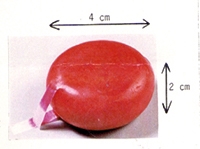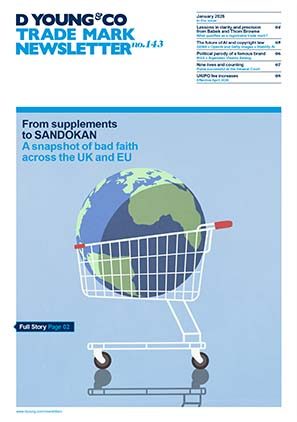Identifying hue: Fromageries Bel v J Sainsbury
In corroboration of the UKIPO’s decision, the High Court of England and Wales has upheld that the trade mark (depicted below) for the Mini Babybel product should be deemed invalid on the grounds that the mark’s description did not identify a specific hue of red and therefore was not sufficiently clear and precise to enable the mark to distinguish the origin of cheese.

The contested 3D UK trade mark was filed in 1996 by Fromageries Bel SA (FBSA) and registered in class 29 in relation to “cheese”. The pictorial representation was filed alongside the description: “The mark is limited to the colour red. The mark consists of a three dimensional shape and is limited to the dimensions shown above”.
J Sainsbury (Sainsbury’s) filed a declaration of invalidity against FBSA’s mark and put forward a number of arguments to the UKIPO Registry, of which one under Section 3(1)(a) TMA was successful, specifically that the “colour red” in the description did not provide sufficient clarity and precision to be capable of distinguishing origin, and that a particular hue of red should have been specified.
Looking gouda for Sainsbury’s
In the UKIPO decision, the essential characteristics of FBSA’s mark went beyond colour per se and were considered to be the shape of the goods in the dimensions indicated, the protrusions making up the pull tag and the colour red. The number of reds in the pictorial representation was taken as being one, although the protrusions as being fuschia-like in colour was also entertained.
The Hearing Officer, Allan James, noted that the “colour red”, as included in the description, did not satisfy the criteria in the seminal cases of Sieckmann and Libertel, in particular the absence of a colour identification code meant that the colour was not represented in an objective and durable manner and that the description was not sufficiently clear and precise.
FBSA appealed the UKIPO’s decision to the High Court of England and Wales.
Doesn’t get cheddar for FBSA
First, FBSA argued that the hearing officer had erred in applying the Sieckmann criteria to a mark that is not a colour mark per se. However, the court noted that there is a connection between the Sieckmann criteria and the requirement that a mark is capable of distinguishing the goods/services of one undertaking from those of another. A Pantone reference to identify a hue would help satisfy the Sieckmann criteria and would also ensure that the mark is capable of distinguishing FBSA’s cheese from those of its competitors.
For marks such as this which are not colour marks per se, the whole mark must be capable of distinguishing, and colour may play a part in that, including identification of a particular hue. The need for precision as to hue will depend on the extent to which a specific hue versus other elements of the mark is likely to confer that capacity to distinguish. In this case it was considered that the trade mark should have been limited to a single hue of red.
Secondly, FBSA argued that the hearing officer should have interpreted the registration as being limited to the specific red colour as filed in the pictorial representation of the registered mark. The court rejected this and noted that the written description specified dimensions but did not specify either a hue of red or that the hue of red should be that in the picture; therefore, the reader would consider that the description covered any colour red. Indeed, the description and picture could be deemed inconsistent.
Interestingly, if no description had been filed, the consumer would have had to fall back on the picture and assume the hue depicted. However, the graphical representation did not take precedence over the description.
Finally, the court also rejected an argument that FBSA should be allowed to retrospectively limit its rights to a specific shade of red (under Section 13 TMA), notwithstanding that the French registration from which the mark claimed priority included a Pantone reference.
The court distinguished between a limitation that narrows the scope of acts which would infringe a trade mark (which Section 13 TMA is intended to cover) and those which would affect the description of a mark. Here it was decided that the additional Pantone reference would affect the description, and this would introduce an additional feature into the content of the trade mark to make it distinctive, which is not permissible.
Therefore all grounds of appeal were rejected and Sainsbury’s declaration of invalidity remained successful. The mark will be removed from the register in due course unless a further appeal is made.
No need for a melt down
This case highlights the importance of identifying a specific hue of colour (for example using Pantone references) in the descriptions of non-traditional trade marks (including shapes and position marks) in particular where colour may be considered an essential characteristic of the mark.
Owners of older 3D marks, in particular those filed alongside descriptions, which were considered valid at the time of filing may now find their marks vulnerable to attack.
Owners may wish to file for new trade marks to strengthen their portfolios where necessary. The D Young & Co trade mark team can undertake assessments on a case-by-case basis including audits of portfolios to identify any vulnerabilities and advise on future strategy.
Case details at a glance
Jurisdiction: England & Wales
Decision level: High Court
Parties: Fromageries Bel SA v J Sainsbury Plc
Date: 12 December 2019
Citation: [2019] EWHC 3454 (Ch)

